Nestled in the heart of the Himalayas, Himachal Pradesh isn’t just a haven for nature lovers; it’s a paradise for food enthusiasts, too. Among its many culinary treasures, the “Dham” stands out as a true testament to the region’s rich cultural heritage and warm hospitality. This traditional feast, prepared during festivals and special occasions, is more than just a meal—it’s a celebration of community and togetherness.
What is Dham?
Dham is a grand vegetarian feast traditionally served during Himachali festivals and special events. Prepared by skilled cooks known as “Botis,” Dham is a meal meant to be shared, typically enjoyed while sitting on the ground on leaf plates called “pattal.” This not only enhances the communal spirit but also adds an authentic touch to the experience.
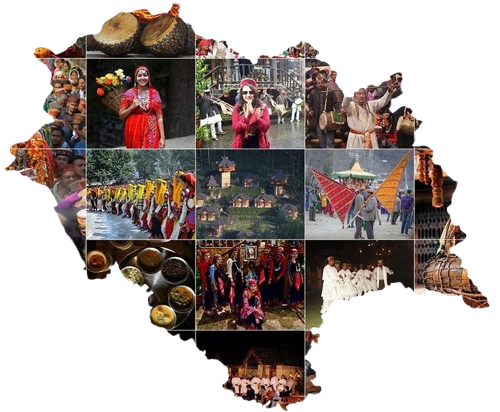
The Components of Dham
A traditional Dham is a symphony of flavors, with each dish contributing its unique taste and aroma to the meal. Here are some of the highlights:
- Rajma (Kidney Beans): Simmered with a blend of spices, this dish is a staple in Dham. The beans are cooked slowly to absorb all the rich flavors, resulting in a hearty and satisfying dish.
- Chana Madra: This yogurt-based chickpea curry is a true delight. The tanginess of the yogurt combined with aromatic spices makes it a standout dish in the Dham ensemble.
- Kadi: A tangy and spicy yogurt-based curry thickened with gram flour (besan), Kadi is seasoned with mustard seeds, fenugreek, and curry leaves, making it both comforting and flavorful.
- Mithdee (Sweet Rice): A sweet treat to round off the meal, Mithdee is made with rice, jaggery, and ghee, providing a perfect balance to the spicy and tangy dishes.
- Sepu Badi: These sun-dried lentil dumplings cooked in a spinach-based gravy add a unique texture and earthy flavor to the meal.
- Boiled Rice: Simple yet essential, boiled rice serves as the perfect base for the rich curries and lentils.
- Lentils: A variety of mildly spiced lentils are always part of a Dham, adding protein and depth to the meal.
- Salads and Chutneys: Fresh salads and tangy chutneys made from local ingredients provide a refreshing contrast to the other dishes.
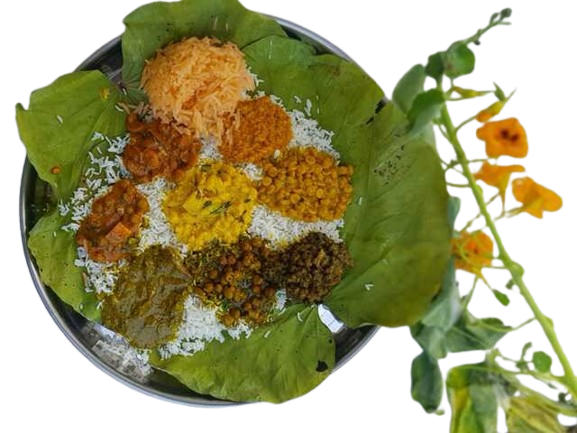
The Varieties of Dham: Kangri, Mandi, Chamba, and Bilaspuri
While the basic concept of Dham is similar across Himachal Pradesh, there are regional variations that add to its richness and diversity.
Kangri Dham: Originating from the Kangra Valley, Kangri Dham typically includes dishes like Rajma, Chana Madra, Kadi, and Sepu Badi. This version is known for its rich and creamy curries, often enhanced with local spices and herbs. The emphasis in Kangri Dham is on the use of dairy products like yogurt and ghee, which lend a luxurious, velvety texture to the dishes. Another unique aspect of Kangri Dham is the use of aromatic spices such as cardamom and cloves, which add a distinctive flavor profile to the meal.
Mandi Dham: From the Mandi region, this variation of Dham features dishes such as Khatta (a sour preparation made with mango powder or tamarind), Mah (black lentils), and Mittha (sweet rice). The emphasis is on the sour and sweet balance, providing a unique flavor profile distinct from other regions. Mandi Dham is particularly noted for its simplicity and the use of locally available ingredients. The Khatta dish, with its tangy and spicy notes, is a highlight, often complemented by the sweetness of Mittha, making it a delightful culinary experience.
Chamba Dham: In Chamba, the Dham includes Madra (made with kidney beans or chickpeas), Rajma, and Khatta. Chamba Dham is known for its use of yogurt-based gravies, making the dishes creamy and tangy. The Madra, a dish that can be made with either kidney beans or chickpeas, is simmered in yogurt and flavored with a variety of spices, creating a rich and hearty dish. The Khatta in Chamba Dham is unique for its use of local fruits and tamarind, adding a refreshing sourness that balances the richness of the Madra.
Bilaspuri Dham: The Bilaspuri Dham is known for its distinctive flavors and unique preparations. It includes dishes like Bada (a type of lentil fritter), Patrode (colocasia leaves rolled with a spicy gram flour paste), and Chana Madra. Bilaspuri Dham is characterized by its use of seasonal vegetables and lentils, often cooked in mustard oil, which gives the dishes a robust and earthy flavor. The use of local spices such as fenugreek and mustard seeds adds to the aromatic profile of the meal.

The Preparation of Dham
Preparing Dham is no small feat. The Botis, who specialize in this traditional cuisine, start their preparations early in the morning. Using locally sourced ingredients ensures that every dish is fresh and authentic.
Cooking is done in large brass utensils over wood fires, which imparts a distinct smoky flavor to the food. Each dish is prepared with great care and precision, resulting in a harmonious blend of flavors that come together to create a memorable meal.
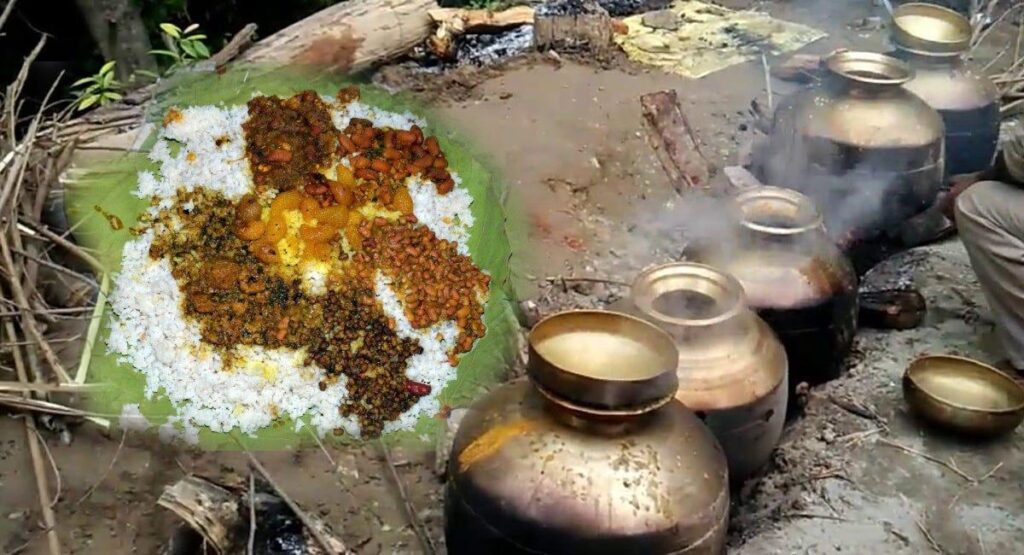
The Significance of Dham
Dham is more than just food; it’s a cultural experience. It symbolizes celebration, unity, and gratitude. Whether it’s a wedding, a festival, or any special occasion, Dham brings people together, fostering a sense of community and shared joy.
This tradition has been passed down through generations, preserving the culinary heritage of Himachal Pradesh. It’s a beautiful reminder of the state’s respect for tradition, community values, and the joy of sharing a meal with loved ones.
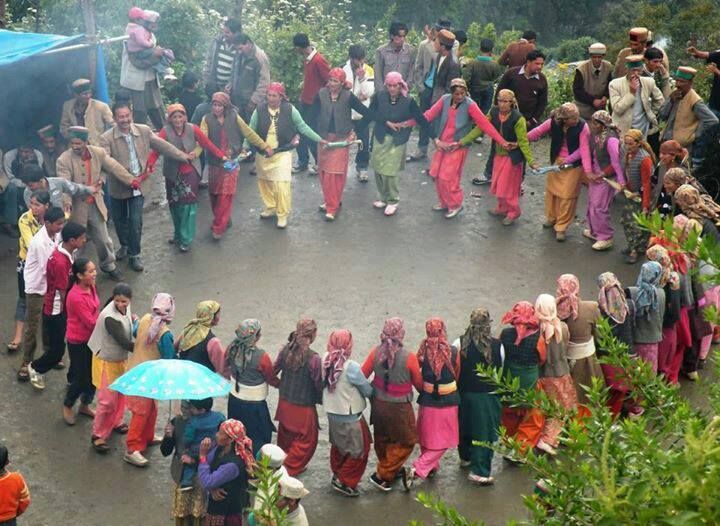
Experience Dham in Himachal
If you ever find yourself in Himachal Pradesh during a festival or a special occasion, make sure to experience Dham. Many local restaurants offer Dham, allowing visitors to get a taste of this traditional feast.
Here are a few places where you can enjoy an authentic Dham:
- Himachali Rasoi in Shimla: Known for its authentic Himachali dishes, this restaurant offers a genuine taste of traditional Dham.
- Johnson’s Cafe in Manali: Famous for its trout dishes, it also serves delicious Himachali cuisine.
- Jimmy’s Italian Kitchen in McLeod Ganj: While primarily an Italian restaurant, it also offers local dishes, including those found in Dham.
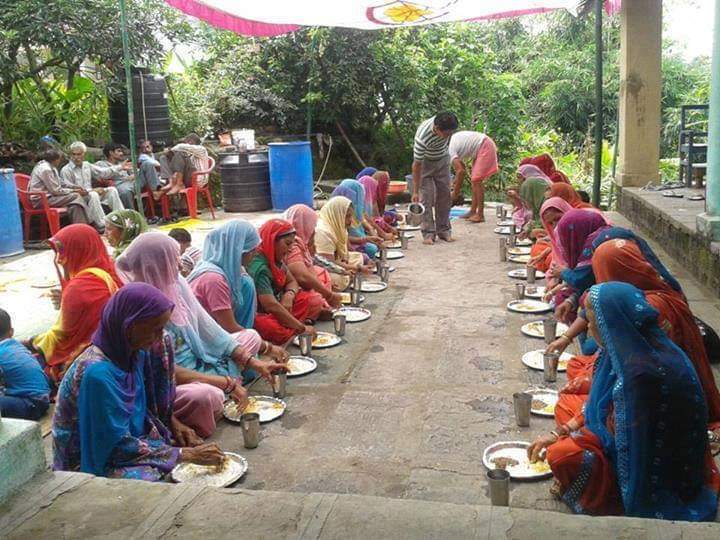
Conclusion
Himachali Dham is not just a meal; it’s a journey into the heart of Himachal Pradesh’s culinary traditions. The blend of flavors, the traditional cooking methods, and the communal spirit make Dham a truly unforgettable experience. So, when you visit Himachal Pradesh, don’t miss the chance to indulge in this festive feast and immerse yourself in the region’s vibrant culinary culture.

